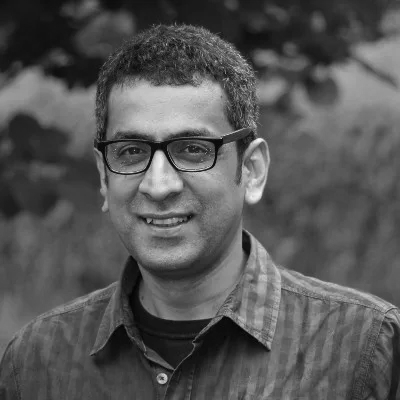This paper deals with the translation of Agha Hasan Amanat’s Urdu play Indersabha (1863) into Marathi by Vasudev Narayan Dongre (1850-1905) in 1884. With the analysis of Dongre’s translation, I intend to discuss different ideas, practices and systems that were in circulation in the nineteenth century Maharashtra. Extending the discussion on Dongre’s play, I would like to reflect upon how the Parsi-Urdu drama has influenced the Marathi theatre. I address the following questions in this paper: What kind of playwriting and theatre-making practices were in circulation? In which ways, the theatre artists and groups generate new ideas and practices? What was Dongre’s dramaturgical response to the Indersabha form of expression? How have the audiences responded to the interplay of performance practices between Parsi-Urdu and Marathi drama?

Image Credit: Kedar Kulkarni)
The time in which Dongre wrote Sangeet Indrasabha was fertile for circulation and cross-pollination of ideas. Cities were growing. The villagers were running towards cities for jobs in different institutional setups, mills and factories. New courts emerged. There were newer generations of English, Parsi, Gujarati and other traders. The tastes of people living in cities and towns began changing. Coinciding with the aspirations of new middle classes, the changing education system along with the social reforms, the ‘what’ and ‘how’ of creative expression went through a transformation. The debates on the issues of other forms of literature such as prose, poetry and fiction opened up newer ideas regarding creative expressions. The existing patronage of the royal and aristocratic families as well as the informal network of support was extended to the ticket-paying urban classes. In response, it required a different language of expression in drama to attract the ticket-playing class.
Broadly, the circulation was manifested through the intra-territory and inter-territory performance dispersion: in and out of Maharashtra and in Marathi while covering theatrical and non-theatrical ideas and practices. The intra and the inter were not exclusive processes. The processes involved a range of practices, including performing pauranik stories (mythological stories) while looking at the Bhagwat melas or developing the theatre-making processes anchored in the bookish drama while getting exposed to the cosmopolitan performance practices in a city like Bombay. In addition, circulation was not only within the theatrical sphere but also between the theatrical sphere and the outside world. For instance, the minimalist spatial layout of the pauranik drama referred to as the Kacheri (courthouse), shows how the vocabulary of administrative practices has travelled to theatre practices.
The simultaneous process of circulation, transgression of boundaries of forms of expression, and hybridity could be seen through three examples. First, the bookish drama’s establishment emerged through translations and literary practices and the changing needs of theatre artists. Second, the newer articulation of social complexities and artistic practices was seen through the combination of ideology and popular traditions, as seen in Satyashodhak jalsas. Third, the emergence of new theatre technologies through the mobility between narrative, musical and popular traditions in Sanskrit, Kannada, parsi-urdu theatre practiced by Bhave, Kirloskar, Kolhatkar and Patankar.
Vasudev Dongre, seven years younger than the iconic Annasaheb Kirloskar (1843-1885), did not write plays for a long time or could not establish himself or his Bombay Royal Company in the time when Kirloskar and his theatre company overwhelmed the theatre-going audiences. However, his play Sangeet Indrasabha was an explicit and bold step toward a more plural practice of theatre-making and presentation by including song, dance and music. Madhavrao Patankar and Shripad Krushna Kolhatkar further explored the Sangeet Indrasabha experiment. As it was practised in 19th century Maharashtra, Dongre also translated Sanskrit plays for his theatre company. He was also known for writing Sangeet Ranginayakin, a farce on prostitution that was widely performed and his performance of Kalidasa’s Shakuntal in Mumbai. As Appaji Vishnu Kulkarni in Marathi Rangbhoomi (1903) writes, “The actors in Dongre’s theatre company were trained in classical music and effectively performed the characters on the stage in the plays that included raga-based compositions. And, of course, since the actors were well-trained to sing on the stage, they entertained the masses as well as trained vocalists with their stage performances.”[1] At times, Dongre’s plays were so well-attended that, as Kulkarni has noted in his book, the audience would inquire on ‘why there is no bigger theatre’ to fit everyone inside the auditorium to see his plays.

References:
[1] 117, Marathi Rangabhoomi, Kulkarni, Appaji Vishnu, Aryabhushan Press:Pune, 1903.
[2] 32, Sagitane Gaajleli Rangbhoomi, Joshi,Baburao, Continental Prakashan:Pune, 1974.
[3] Sangeet Shakuntala, Kirloskar, Balwant Pandurang, Arya Bhushan Press:Pune, 1881.
[4] 55, Sangitane Gaajleli Rangbhoomi, Joshi,Baburao, Continental Prakashan:Pune, 1974.
Share this:
- Click to share on Facebook (Opens in new window) Facebook
- Click to email a link to a friend (Opens in new window) Email
- Click to share on X (Opens in new window) X
- Click to share on LinkedIn (Opens in new window) LinkedIn
- Click to share on WhatsApp (Opens in new window) WhatsApp
- Click to share on Telegram (Opens in new window) Telegram



1 Comment